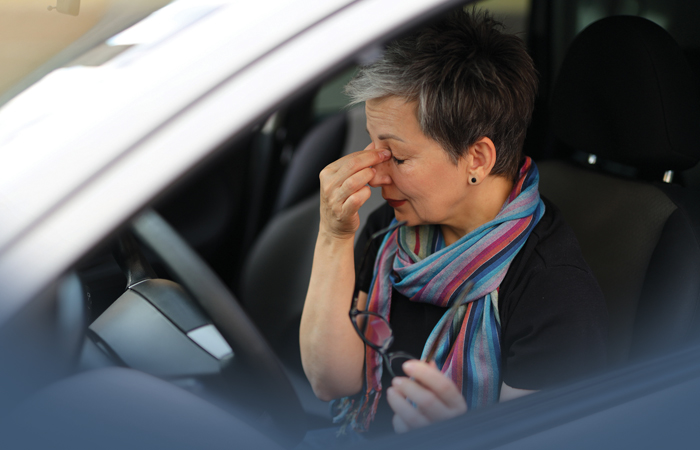In In-depth
Follow this topic
Bookmark
Record learning outcomes
It’s estimated that more than 20 million people in the UK are affected by allergies of some kind, ranging from food allergies, to pet allergy, to hayfever. One that is perhaps less well known, but still very common, is house dust mite allergy – though the condition has been in the spotlight this year after the National Institute for Health and Care Excellence (NICE) announced in January that it was recommending a “life-changing treatment” shown to reduce symptoms.
An innovative therapy
The ‘first-of-its-kind’ treatment recommended by NICE is thought to benefit around 13,000 people in England. The therapy, Acarizax (12 SQ-HDM SLIT) provides a new option “for treating persistent moderate to severe house dust mite allergic rhinitis” in patients aged between 12-65 years. The condition is classed as persistent if “symptoms are present for four or more days a week for a month, and have not been resolved by standard treatments,” explains NICE.
“For people with house dust mite allergic rhinitis that is not controlled by standard treatments, this new cost-effective drug will have a significant positive impact on their quality of life,” says Helen Knight, director of medicines evaluation at NICE. “This is a chronic, debilitating condition which can prevent people from going to their workplace or school. This medicine has been found to improve symptoms, helping people to live their lives and has potential to be truly life changing.”
Made by ALK-Abello, the tablet is said to increase the body’s resistance to dust mite allergy by giving a regular fixed amount of house dust mite allergy extract daily. “Regular exposure under the tongue induces an immune response that reduces sensitivity to the allergen over time, reducing the severity of symptoms and the need for medication,” explains professor Adam Fox, consultant paediatric allergist at a leading London teaching hospital (instagram.com/dradamfox). “A long three-year course also has a disease-modifying effect, which means that this reduction in symptoms persists beyond the course of the medication – something that will not happen with regular rhinitis medications.” This doesn’t mean that patients should immediately rush to get rid of their antihistamines and nasal sprays, however. “SLIT should be seen as an adjunct treatment, not a replacement for these,” he says.
“There are house dust mites in homes all around the country, even when they’re regularly cleaned and vacuumed”
One of the much-lauded advantages of Acarizax is that, while treatment should initially commence under close medical supervision (as a precaution to monitor any potential sensitivity), it can then be continued at home. “Typically, the prescribing doctor will give the first dose in their clinic, explaining how to take it, when to miss the dose and what side effects to look out for,” says professor Fox. “Subsequent doses would just be taken at home, with the prescriptions supported differently according to the clinic.” It can take eight to 14 weeks before the patient notices any improvement.
“Although initial access to a specialist allergy service will mainly be required to commence treatment, importantly it can be continued as a home treatment, without the need for frequent hospital visits which incur travel and time costs,” adds Amena Warner, head of clinical services at Allergy UK. “The patient benefit will be far reaching, and we welcome this decision.”
While the NICE announcement has been widely welcomed, Acarizax won’t be suitable for everyone, including patients who have an illness affecting their immune system. Treatment should also not be started during pregnancy, but if a patient becomes pregnant during the three-year course they should talk to their doctor.

Understanding more on mites
It may come as a surprise to pharmacy customers that there are house dust mites in homes all around the country, even when they’re regularly cleaned and vacuumed. “In people allergic to dust mite, it is often not the mite itself but proteins in their droppings which cause the allergy symptoms,” according to Allergy UK. “Each mite produces about 20 of these waste droppings every day and they continue to cause allergic symptoms even after the mite has died.”
Measuring approximately a quarter of a millimetre in length, dust mites may not be noticeable to the naked eye, but they feed on dead skin cells, and are particularly fond of residing in bedrooms, carpets and soft furnishings.
The dust mites themselves may be tiny, but the condition can be a big source of misery for patients. Sufferers may complain of a runny or blocked nose, sneezing, or itching of the eyes, nose, throat or mouth; asthma and eczema can also be exacerbated. Symptoms may feel worse after activities such as housework or changing bedding, as the allergens can become airborne when dust is disturbed.
As well as affecting physical wellbeing, this can potentially affect a patient’s mental health, sleep, and have a financial implication as they may end up investing in special barrier covers for their bedding, a high-filtration vacuum cleaner, and so on. Sufferers and their families may also feel burdened by the need for frequent cleaning, despite the frustrating fact that even their best efforts won’t completely remove the mites.
“Many endure years of misery; of nasal congestion, loss of smell and sneezing, impacting their sleep and daily living with little respite from symptoms. This can also affect mental wellbeing. With this treatment there is now hope for people who fit the criteria to be able to access this through the NHS,” says Amena.
If house dust mite allergy is suspected, the condition can be confirmed using a skin prick test or blood test. Traditionally, management has involved trying to limit allergen exposure, while treatments available from the pharmacy may include antihistamines, nasal sprays or eye drops. Pharmacy teams can help patients to find the most suitable options for them by discussing symptoms and checking for any contraindications.
Patients should see a GP if their allergic rhinitis continues to worsen, it’s exacerbating their asthma, is affecting their sleep and daily life, pharmacy treatments aren’t working, or they’re not sure what’s causing their symptoms.
Minimising exposure
It’s not possible for people to completely remove house dust mites from their home, says Allergy UK, but they can take steps to help reduce allergen exposure. Here are some top tips that you can share with customers:
Cleaning is key. “A critical component of HDM treatment is a very rigorous exposure-reduction cleaning regime,” says an Allergy UK spokesperson. “Thorough and regular cleaning will lower, but not totally remove, dust mite allergens.” Most efforts should be focused on rooms where people spend most of their time and where dust mite load is greatest, such as “bedrooms and living areas where there are soft furnishings such as mattresses, armchairs, etc.”.
Be bed savvy. “Using allergy-friendly bedding, including pillows, is a first step. Washing bedding regularly can help – washing at 60 degrees centigrade or above will kill mites.”
Don’t forget floors. Remove carpets from the bedroom if possible. Vacuum hard floors regularly using a “high-filtration vacuum cleaner with filters capable of retaining a high proportion of the smallest particles (HEPA filter, S-class filter or similar)”. Allergy UK provides details of suitable vacuum cleaners, which can be found here: bit.ly/4jlfomD.
Damp-wipe all surfaces each week. This includes areas such as windowsills, tops of cupboards, etc.
Stay on top of toys. “Washable stuffed toys should be washed as frequently and at the same temperature as bedding.” Alternatively, if the item can’t be cleaned at 60 degrees, the charity suggests popping it in a plastic bag in the freezer for at least 12 hours once a month, then washing it at the recommended temperature.
As well as being in the home, house dust mite allergen can also be found in vehicles and at work, so patients should take steps to limit exposure in these areas, too. For further information and more tips, see the Allergy UK: allergyuk.org/resources/house-dust-mite-allergy-factsheet/.
How you can help
There are several ways pharmacy teams can support patients with house dust mite allergy. Firstly, people may have heard the announcement about Acarizax and have questions on that, so it’s good to be well-informed and be able to signpost customers to relevant resources.
Secondly, pharmacy teams can share a number of lifestyle tips to help reduce dust mite exposure (see boxout). Meanwhile, medicines such as antihistamines and nasal sprays remain the first-line treatment options for allergic rhinitis, and pharmacy staff can assist patients in finding the most suitable type and format for them.
Action for adverse reactions
As Acarizax becomes available on the NHS, pharmacy staff may find themselves fielding queries from those who’ve been prescribed it. “Pharmacy teams have a useful role to play in advising and supporting patients around the common local side effects which often happen for a few minutes after dosing (e.g. itch and sometimes swellings),” says professor Fox. “These usually improve over time and can be managed by regular use of long-acting, non-sedating antihistamines.”
If a patient starts experiencing any side effects that are worrying them or causing problems, then they should contact their doctor. Adverse reactions should also be reported via the Yellow Card Scheme at: mhra.gov.uk/yellowcard.
In rare cases, patients may have a potentially severe reaction, such as:
- Difficulty breathing
- Difficulty swallowing
- Rapid swelling (for example, of the face, throat or skin)
- Voice changes
- Hives.
In this situation, patients should stop taking Acarizax and seek medical advice immediately.
For more information on possible side effects, see the Acarizax patient information leaflet: medicines.org.uk/emc/files/pil.12905.pdf.

